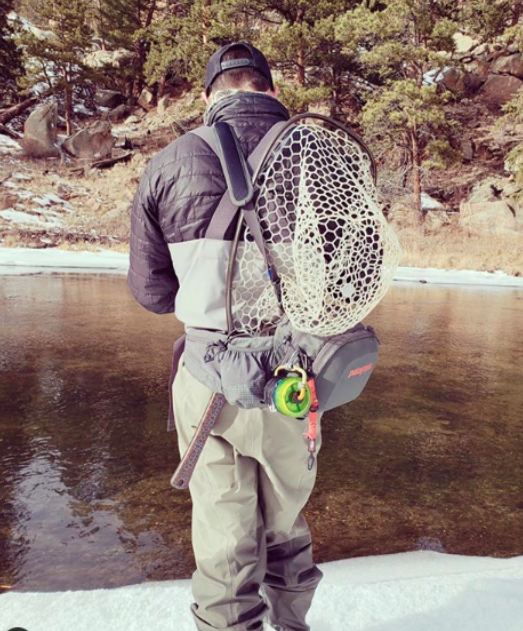Winter is one of our favorite times of the year to fish in Colorado. I know it sounds crazy, but for the dedicated angler it is a time when you will find some solitude and test your skills and patience on the water. Yes, you will more than likely run into some below zero days, frozen guides and lines as well as some picky trout. However, the fishing is far less variable with fairly stable conditions. While you can generally expect cold weather, Colorado does offer some fairly mild days throughout the winter so if you time it right you may find yourself in a very comfortable setting.
Winter fishing can be intimidating so we’ve put together a few tips and tricks to boost your confidence on the water and get you into more trout.

- Downsize your tippet: During the winter, the water is generally gin clear, making trout highly suspicious and skittish. Using a lighter tippet can make all the difference when it comes to fooling selective trout. In the early parts of the year, we generally use 4x – 5x tippet. In the winter, 5x – 6x tippet will help you make cleaner presentations and lead to more takes.
- Use smaller flies: Midges dominate the trout’s diet for most of the year, but more so during the winter. These bugs are very small, so we recommend working with nymphs in the #22 – 26 size range. If you’re striking out and the trout aren’t interested in your fly, try downsizing the same pattern instead of changing the fly altogether. We’ve learned that this can make all the difference. Basic midge patterns such as the Zebra Midge, Black Beauty, Top Secret and thread midge patterns are highly effective.
- High stick nymphing: We’ve mentioned this before, but we will say it again. Trout are very selective during the winter months. This means that sloppy presentations and long casts won’t be rewarded. High stick nymphing will allow you to make slow and drag free drifts that will present a more life-like fly to the trout. Trout also feed less aggressively during the winter, which results in more subtle takes. High sticking will allow you to identify those subtle takes and set the hook faster. With this in mind, set the hook often as takes can easily go unnoticed.
- Short Clean Casts: Trout are very finicky during the winter and spook easily. As such, you are going to want to do your best to sight fish and stick with short clean casts. Once you have located holding trout, cast 5 to 10 feet in front of the fish. Short casts allow you to be more precise and make for easy line management.
- Focus on the deep and slow sections: With low flows and cool water temperatures, trout will hold deep in the slow runs and pools. The reason for this is trout need to conserve energy while consuming enough food to stay alive and the deeper water columns are generally slower and provide the least resistance. Therefore, anglers should focus most of their effort on the deep pools and runs with a heavy nymph rig.
- Sleep in: It’s second nature to race to the river and claim your favorite hole, but that strategy is best utilized in the warmer months. During the winter, the early morning hours are damn cold, and similar to the difficulty you experience when getting out of bed on a cold morning, trout are also less active. So, set your alarm back a couple hours and hit the river between 10 am and 11 am. At this time, the sun will have warmed up the water leading to more prevalent bug life and the trout will be more active and willing to feed.
- Use a smaller indicator: Similar to using lighter tippet, small indicators are also important. With clear and low water, trout are highly alert and can easily be spooked by the splash of an indicator the size of a ping-pong ball. So, the best thing to do is decrease the size of your indicator. If you use thingamabobbers, find the smallest one possible and use that. Our personal preference is a yarn indicator. Yarn indicators are less disruptive and allow you to make light presentations in slow water. Similar to the bobbers, don’t be afraid to trim off some of the yarn to make the indicator smaller and stealthier. We also like to use large dry flies that will support the weight needed to get your nymphs deep.
- Wear dark clothes: Leave the pastel fishing shirts at home and wear dark or neutral colored clothing. Some people laugh at this idea, but we’ve found that wearing dark clothing decreases the odds of trout spotting you.
- Play with your weight: During the winter, trout focus on one thing, survival. To survive, they must conserve their energy while consuming food. To do this, trout will hold in the deepest water columns where the current is slowest. This makes using and adjusting weight (split shot) critical. Using ample weight will ensure that your flies get down deep where the trout are feeding. If you’re not having any luck, adjust your weight until you find the right depth.
